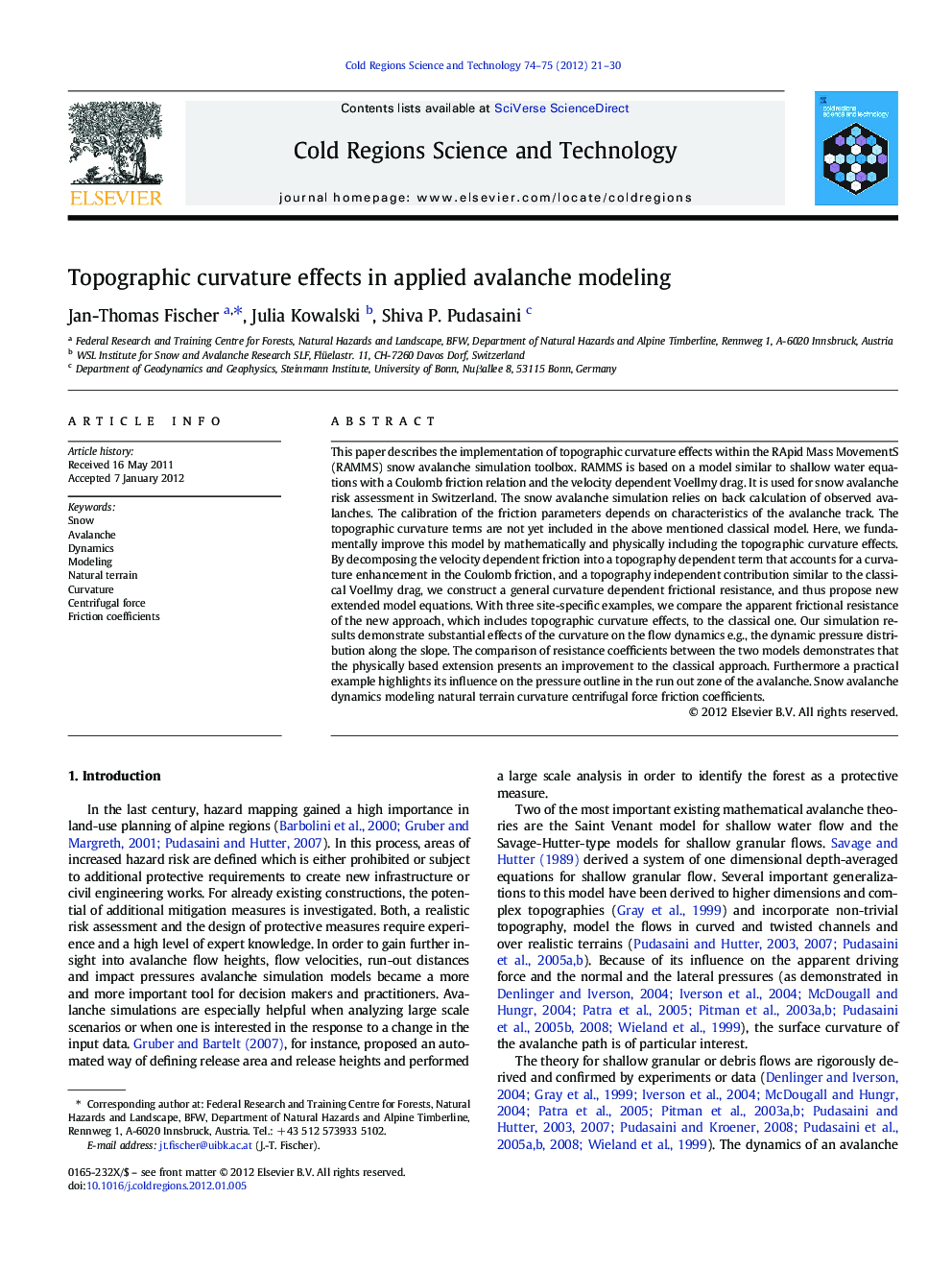| Article ID | Journal | Published Year | Pages | File Type |
|---|---|---|---|---|
| 4675984 | Cold Regions Science and Technology | 2012 | 10 Pages |
This paper describes the implementation of topographic curvature effects within the RApid Mass MovementS (RAMMS) snow avalanche simulation toolbox. RAMMS is based on a model similar to shallow water equations with a Coulomb friction relation and the velocity dependent Voellmy drag. It is used for snow avalanche risk assessment in Switzerland. The snow avalanche simulation relies on back calculation of observed avalanches. The calibration of the friction parameters depends on characteristics of the avalanche track. The topographic curvature terms are not yet included in the above mentioned classical model. Here, we fundamentally improve this model by mathematically and physically including the topographic curvature effects. By decomposing the velocity dependent friction into a topography dependent term that accounts for a curvature enhancement in the Coulomb friction, and a topography independent contribution similar to the classical Voellmy drag, we construct a general curvature dependent frictional resistance, and thus propose new extended model equations. With three site-specific examples, we compare the apparent frictional resistance of the new approach, which includes topographic curvature effects, to the classical one. Our simulation results demonstrate substantial effects of the curvature on the flow dynamics e.g., the dynamic pressure distribution along the slope. The comparison of resistance coefficients between the two models demonstrates that the physically based extension presents an improvement to the classical approach. Furthermore a practical example highlights its influence on the pressure outline in the run out zone of the avalanche. Snow avalanche dynamics modeling natural terrain curvature centrifugal force friction coefficients.
► Improved snow avalanche simulation with implementation of extended friction relation. ► Description and derivation of surface curvature effects in natural terrain. ► Practical simulation results confirm the significance of the new model. ► Investigation of model calibration process.
